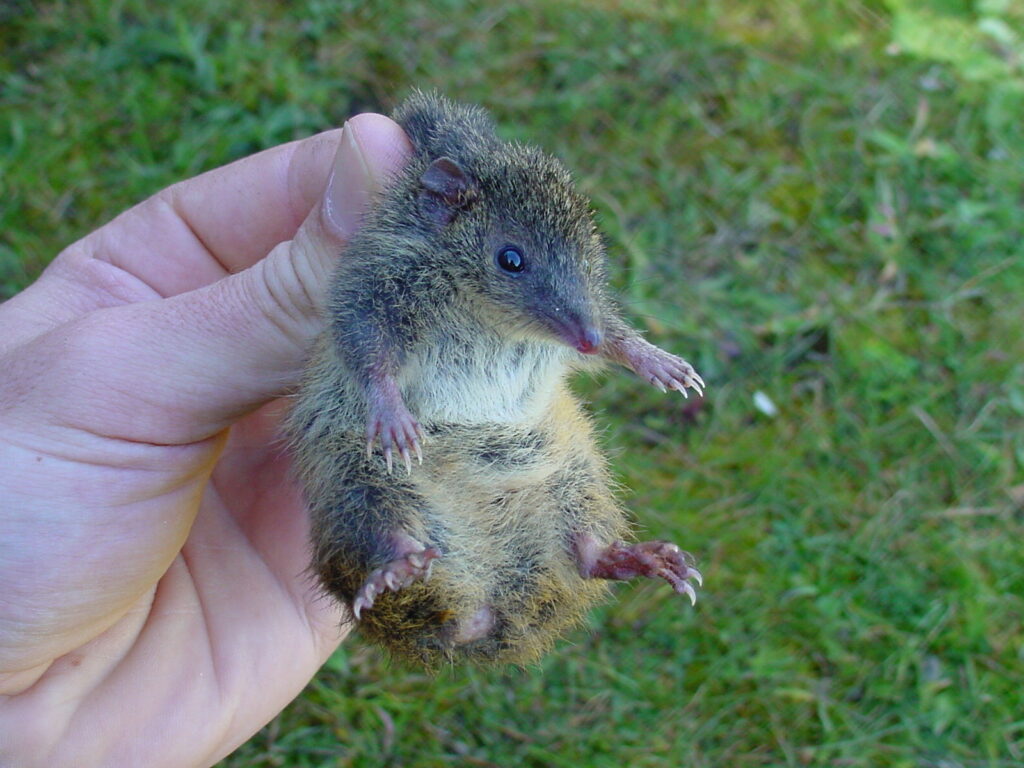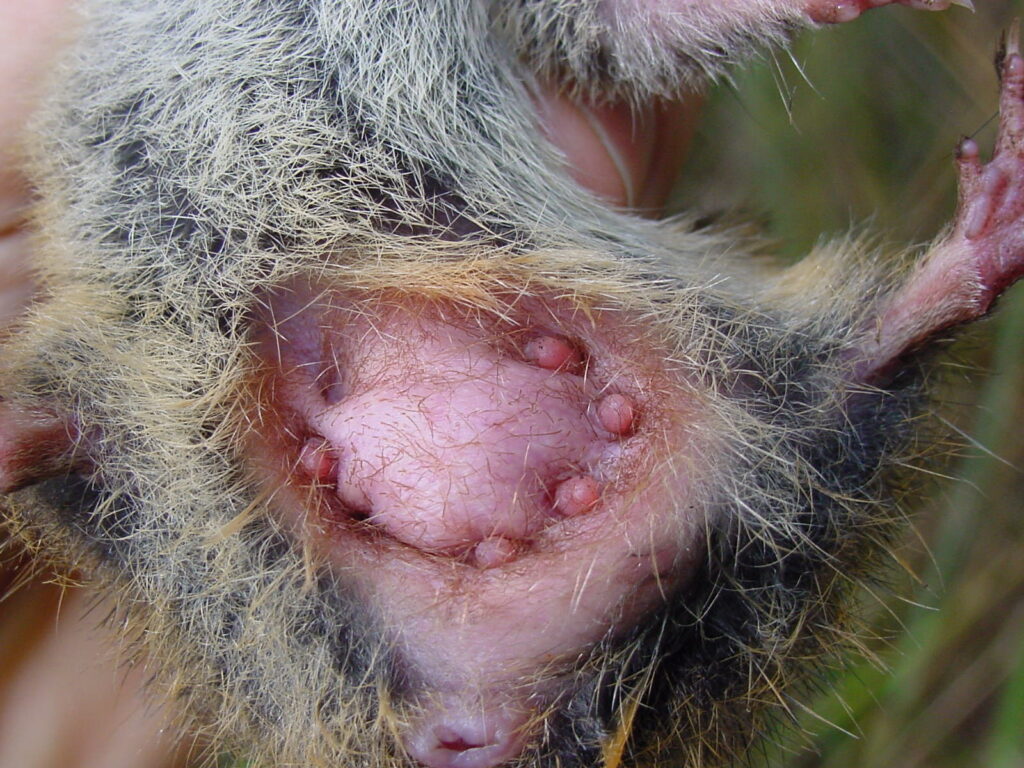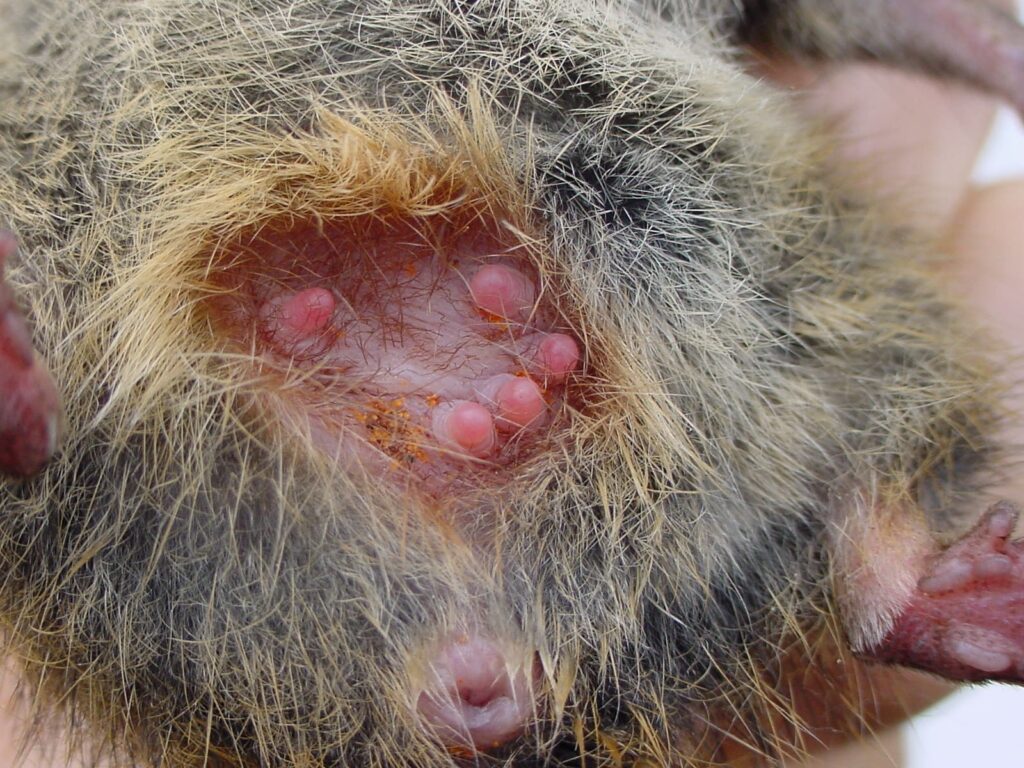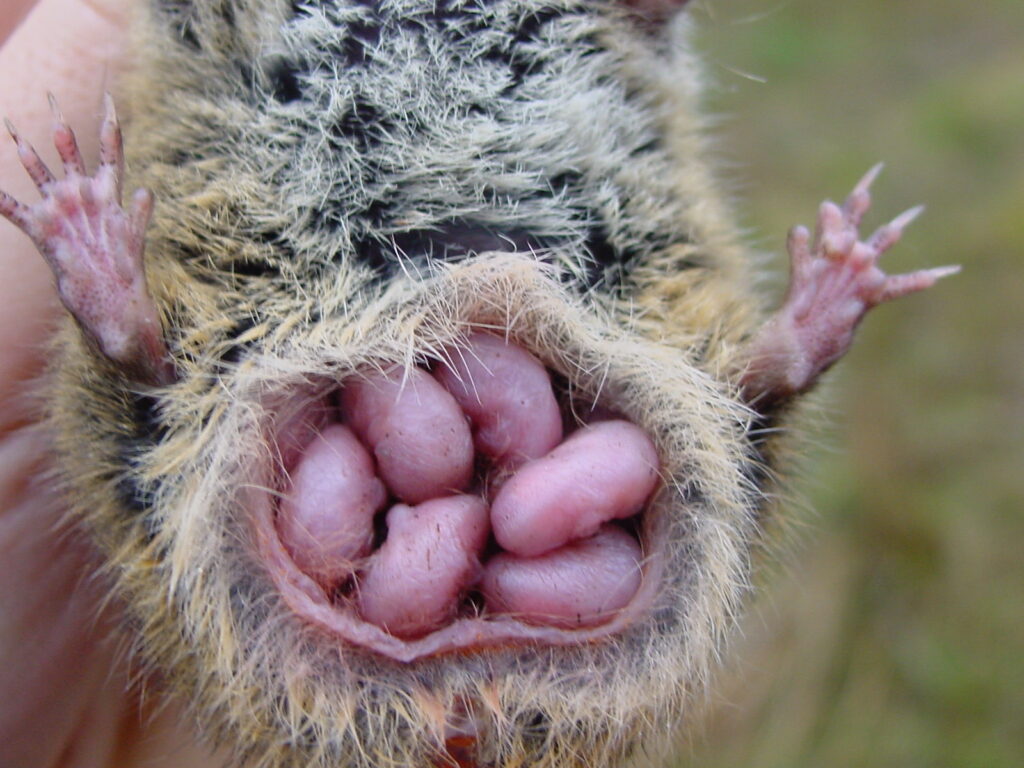Recalling a tale… of an Antechinus with no tail!
A week or two ago I was reading a fascinating antechinus story in the Conversation, which talked about an observed incident of cannibalism in the Dusky Antechinus, and the potential importance of the resources left behind (i.e. bodies left available to other carnivores) as a result of all males in an antechinus population dying off each year after breeding. If you don’t have time to follow the link above, then you might like to take a quick look at the video evidence below (warning for the squeamish – shows carcass being eaten!).
Reading this story got me thinking about my favourite antechinus – and yes, I do have a favourite. No, I don’t mean a species, but an individual… Let me explain.
Way back in December 1999, when I was monitoring a population of the Swamp Antechinus at Lake St Clair, near Robe in SA, I caught a young female animal in the territory of her mother. She was given a unique mark, by removing a small punch of skin (which was kept and preserved as a genetic tissue sample) from one of her ears, and given the code 2B. [This was the second generation of animals I encountered at the site, hence the number 2, and she was the second animal from that generation I caught, hence the letter B.]
At this point, 2B weighed 34 grams, and this only increased to 36 grams in January and stayed the same in February of 2000.
In February, 2B didn’t really stand out, but all that was about the change because on the 11th March 2000, I captured the same female only to discover that she had no tail – which was quite a surprise!

Somehow she had lost her tail right at the base and it was already healed over, meaning that all of a sudden, I had a very recognisable animal with a distinctive feature!
Over the next 18 months or so, this female Swamp Antechinus and I got to know each other quite well, as she was regularly captured during these monitoring surveys. Beyond taking an occasional weight and checking her pouch, she was nice and quick to identify, because if I looked into a trap and saw an animal with no tail, I knew it was her. In the end, I recall catching her so often that she actually ended up being quite placid (by antechinus standards that is) in the hand.
After achieving a pre-breeding weight of 47 grams in June 2000, something interesting happened. Although a fold of skin was developing as normal to form her psuedo-pouch in July, when other animals went on to have pouch young (often the maximum number of 8), my tailless friend had none. The photo below shows you what I should have been seeing at the time.
I remember wondering at the time what may have gone wrong. Did she not mate successfully due to the missing tail? Or – as silly as it might sound – I did wonder if the young didn’t crawl in the right direction when they were born? Or perhaps the stress of losing her tail months earlier had impacted her physiology in some way? We’ll never know, but I don’t ever recall seeing another first year breeding female without pouch young, either before or since.
But all was not lost and this story has a happy ending… because on a number of occasions I have seen a female antechinus live for a second year to breed again. My little friend, ‘2B Tailless’ as I called her, did survive to the following year and in July 2001, I recorded her with 2 small pouch young. However, a couple of months later, it was apparent that she had lost one of the youngsters, as only one of her nipples was still in use, but the one youngster she had back in the nest did make it to join the next generation. The way I could tell this, is explained below.
While from a different animal, the photos below show how the appearance of the pseudo-pouch area changes over time, and how by counting the number of nipples in use (this time 5 of a maximum of 8) we can see how many youngsters are back in the nest.


I often used to wonder how ‘2B Tailless’ lost her tail, and the article I referred to at the start this blog made me wonder if perhaps a hungry brother or sister of hers might have been to blame!
Finally, in case you are wondering, despite many years and experiences of mammal trapping since (although much less in recent times), I have never seen a case like this again!


